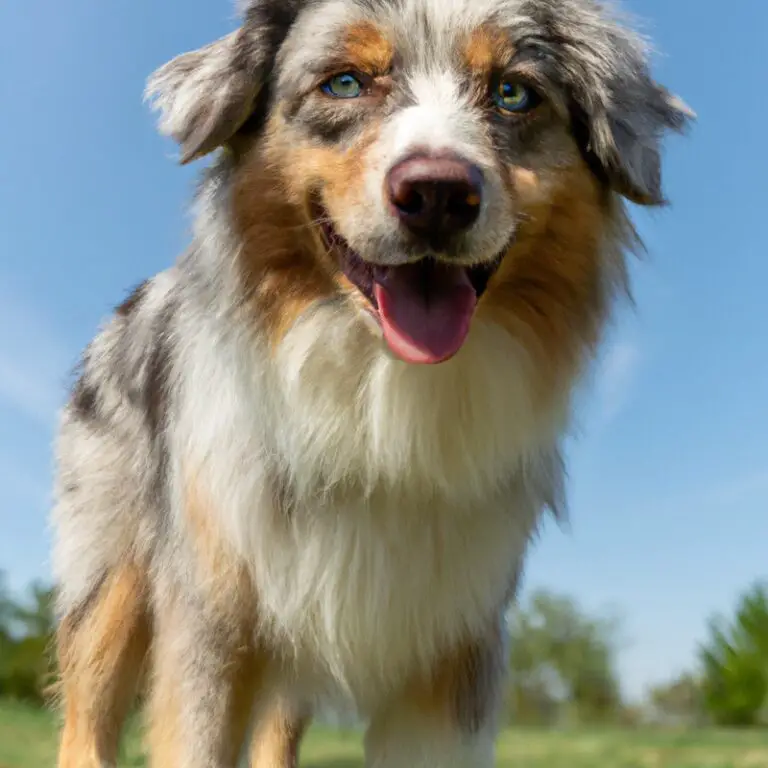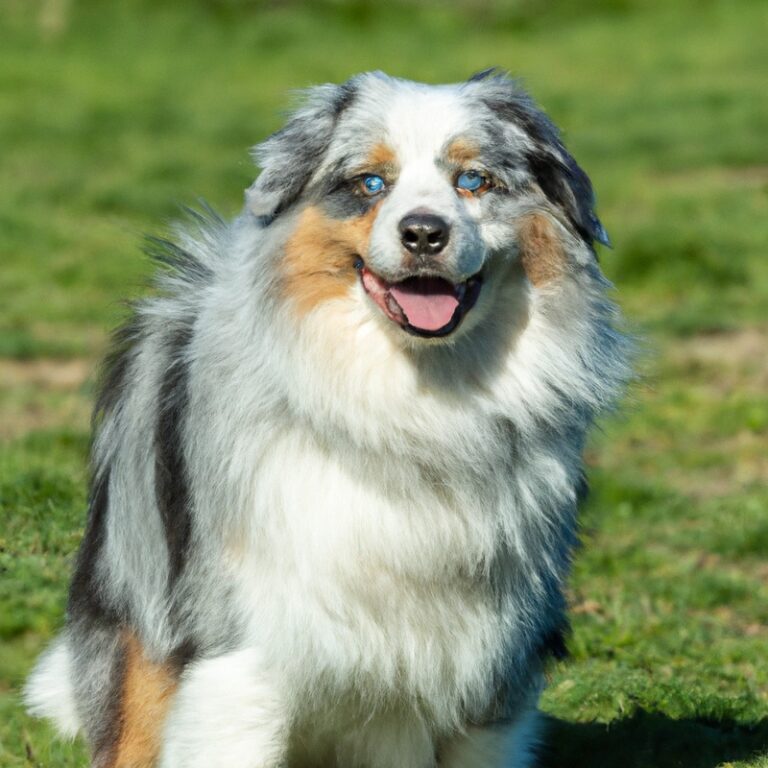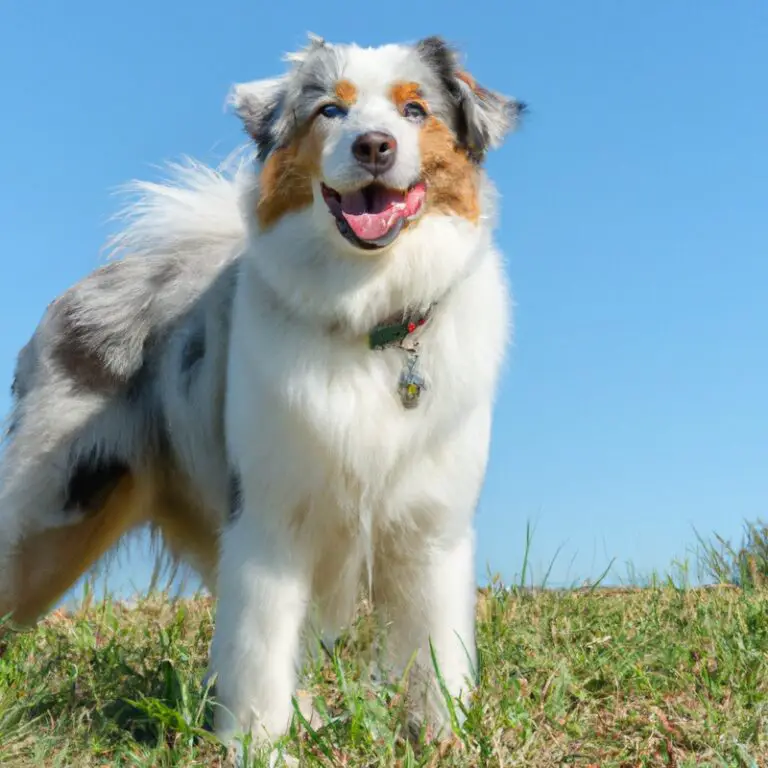Can Australian Shepherds Be Trained To Be Competitive In Agility Trials?
Key Takeaways:
- Australian Shepherds can be successfully trained to be competitive in agility trials.
- Proper training and consistent practice are key to developing an Australian Shepherd’s agility skills.
- The intelligence and athleticism of Australian Shepherds make them well-suited for agility competitions.
- Australian Shepherds can excel in agility trials with the right training techniques and a strong bond with their handlers.
Are Australian Shepherds made for agility trials? As a passionate dog lover and experienced agility trainer, I’d confidently say YES! These versatile and energetic dogs possess the potential to shine in the world of competitive agility.
In this article, I will delve into the unique characteristics and abilities of Australian Shepherds that make them ideal candidates for this thrilling sport.
Join me as we explore the training methods, essential skills, and handling techniques necessary to transform your Aussie into a top-notch agility competitor. But, be prepared for challenges too! Let’s discover how to overcome them together and unlock your dog’s true potential.
| Factors | Australian Shepherds |
|---|---|
| Physical Attributes | ✅ Agile and athletic build |
| Intelligence | ✅ High level of intelligence |
| Trainability | ✅ Eager to please and highly trainable |
| Energy Level | ✅ High energy dogs, well-suited for agility |
| Herding Instincts | ❌ May exhibit herding behaviors during trials |
| Socialization | ✅ Socialization is crucial for proper training |
| Coat Maintenance | ✅ Moderate coat maintenance |
The Australian Shepherd: A Versatile and Energetic Breed
1. Introduction to the Australian Shepherd’s Characteristics and Abilities
Australian Shepherds are known for their versatile abilities and energetic nature. They are intelligent, eager to please, and highly trainable.
This breed excels in various activities like herding, obedience, and agility.
Australian Shepherds have a strong work ethic and thrive when given a job to do. They have excellent problem-solving skills and are quick learners.
With their athleticism and agility, Australian Shepherds have the potential to excel in competitive agility trials.
Their natural agility, coupled with proper training and socialization, can make them a force to be reckoned with in the agility ring.
2. Understanding the Basics of Agility Trials
Agility trials are exciting events where dogs showcase their speed, agility, and obedience skills while navigating various obstacles within a set time limit. These trials test the teamwork between the dog and their handler.
In agility trials, courses are set up with different obstacles such as jumps, tunnels, weave poles, and contact equipment like A-frames and seesaws.
The goal is for the dog and handler to complete the course accurately and quickly. The handler’s role is to guide the dog through the course using verbal cues and body language.
Accuracy is crucial in agility trials, as any faults, such as knocking down a jump or missing an obstacle, result in time penalties.
The less time and faults a team has, the higher their chances of success. To participate in agility trials, Australian Shepherds need to have a solid foundation in obedience training.
They should respond reliably to basic commands like sit, stay, come, and have good leash manners.
It’s also important for them to have a strong bond with their handler. In addition to obedience training, teaching Australian Shepherds specific agility skills is necessary.
This includes teaching them how to properly jump, weave through poles, and navigate contact obstacles.
Handlers can start by introducing their Australian Shepherd to individual obstacles and gradually building up to full courses. Positive reinforcement, such as treats and praise, is commonly used to reinforce correct behavior.
It’s essential for handlers to understand the rules and regulations of agility trials before competing.
They should familiarize themselves with the various classes and divisions available, as well as any specific requirements or restrictions. Overall, understanding the basics of agility trials involves knowing the obstacles, the rules, and how to train and guide your Australian Shepherd through the course.
With dedication, practice, and a strong bond, Australian Shepherds can be trained to be competitive in agility trials.
Training Australian Shepherds for Agility Trials
1. Starting Early: Puppy Foundation Training
When it comes to training Australian Shepherds for agility trials, starting early with puppy foundation training is key. By introducing basic commands and behaviors to your Aussie puppy from a young age, you can lay the groundwork for future agility training.
Start with simple commands like sit, stay, and come, and gradually introduce more complex skills as your puppy grows.
Consistency and positive reinforcement are crucial aspects of this early training process. By keeping training sessions short, fun, and rewarding, you can build a strong foundation for your Australian Shepherd’s agility journey.
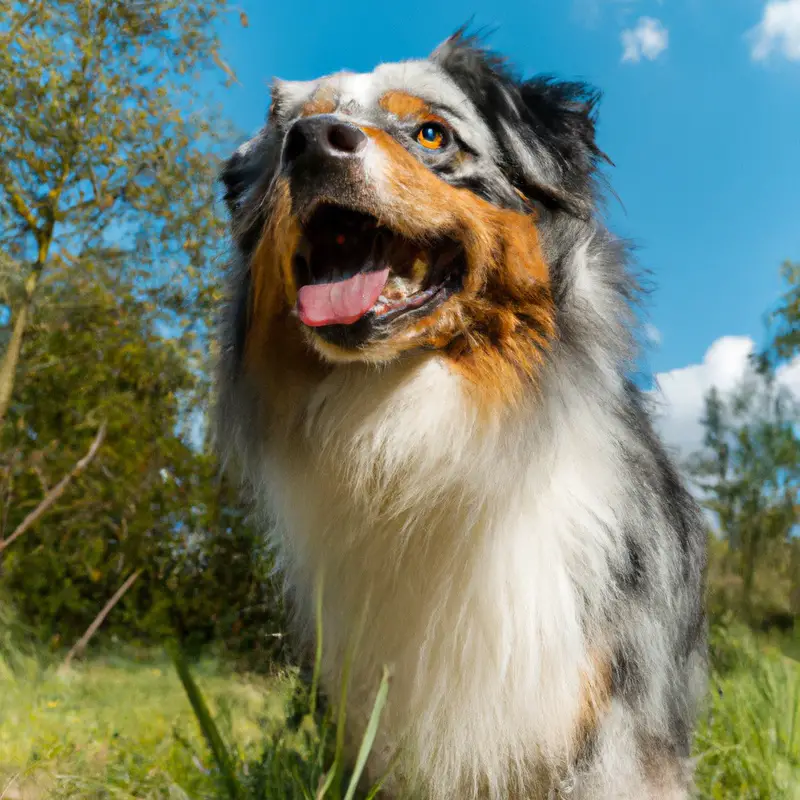
2. Building Essential Skills for Agility
Building essential skills for agility is an important part of training Australian Shepherds for competitive trials. Here are some key skills to focus on:
- Focus and Attention: Teaching your Australian Shepherd to maintain focus and pay attention to you is crucial for success in agility. Use positive reinforcement techniques, such as rewards and praise, to encourage and reinforce good focus.
- Obedience and Control: Basic obedience commands like sit, stay, and come are fundamental for agility training. Your Shepherd should be able to respond reliably to these commands, both on and off-leash.
- Body Awareness and Coordination: Agility requires your dog to navigate obstacles with precision. Train your Shepherd to become aware of their body and have good coordination. Exercises like targeting and balance work can help develop these skills.
- Jumping Skills: Jumping is a fundamental agility obstacle. Start by teaching your Shepherd to jump over low obstacles, gradually increasing the height. Teach them to approach the jump from different angles and in different directions to improve their jumping technique.
- Weave Poles: The weave poles are a challenging obstacle, but with proper training, your Shepherd can become proficient. Start with channel weaves and gradually close the gaps between the poles, rewarding your dog for going through correctly.
- Tunnel Skills: Introduce your Shepherd to tunnels gradually, allowing them to explore and become comfortable with crawling through. Use treats and toys to motivate them to enter and exit the tunnel confidently.
- Contact Obstacles: Teaching your Shepherd to safely and confidently navigate contact obstacles like the A-frame, dog walk, and teeter-totter is essential. Start with low heights and gradually increase difficulty while maintaining control.
Remember, training for agility takes time and patience. Consistency and positive reinforcement are key.
By focusing on these essential skills, you’ll be well on your way to preparing your Australian Shepherd for competitive agility trials.
Keep practicing and have fun with your training sessions!
3. Teaching Australian Shepherds Obstacle Familiarization
When it comes to teaching Australian Shepherds obstacle familiarization, it is important to start with basic obedience training. Begin with simple obstacles like tunnels and jumps, gradually increasing difficulty as they become more comfortable.
Positive reinforcement is key in this process, using treats and praise to reward their success.
Consistency and patience are crucial when introducing new obstacles, allowing them to explore and build confidence. Practice regularly and gradually increase the complexity of the obstacles to ensure their proficiency.
By implementing these techniques, you can help your Australian Shepherd become familiar and confident in navigating agility obstacles.
4. Introduction to Handling Techniques in Agility Trials
Handling techniques are an important aspect of agility trials for Australian Shepherds. As a handler, I need to effectively guide my dog through the course while maintaining clear communication and ensuring their safety.
One key technique is using body language and verbal cues to direct my dog’s movements.
By using my arms, body positioning, and voice, I can indicate which obstacle to approach and how to navigate it. Another important technique is timing, which involves signaling my dog at the right moment to initiate a maneuver.
This requires practice and coordination to ensure smooth and efficient execution.
Lastly, I must adapt my handling techniques based on the course layout and my dog’s individual strengths and preferences. Flexibility is key in agility trials, and by continually refining my handling skills, I can enhance my Australian Shepherd’s performance in competitive events.

5. Incorporating Advanced Training for Competitive Agility Trials
Incorporating advanced training techniques is key to preparing your Australian Shepherd for competitive agility trials. Once your dog has mastered the basic skills and obstacle familiarization, you can start implementing more challenging exercises to improve their performance.
Here are a few advanced training strategies to consider:
- Advanced obstacle sequencing: Start combining multiple obstacles in different sequences to enhance your dog’s ability to follow instructions and make quick decisions. Gradually increase the difficulty level by adding more complex patterns and reducing the time between obstacles.
- Speed and accuracy drills: Focus on improving your dog’s speed and efficiency through timed exercises. Set up a course with a specific time limit and encourage your dog to complete it as quickly as possible with minimal mistakes. Use rewards and positive reinforcement to motivate them to perform better.
- Distance handling: Train your Australian Shepherd to navigate obstacles while you’re at a distance. This technique requires clear communication and precise cues to guide your dog through the course. Start by sending them to obstacles from a short distance and gradually increase the distance over time.
- Directional commands: Teach your dog advanced commands like “left,” “right,” and “spin” to help them navigate complex courses more effectively. These commands allow you to communicate with your dog from a distance and make quick turns and changes of direction without physically guiding them.
- Proofing exercises: Challenge your Australian Shepherd’s focus and obedience by introducing distractions and varying environments during training sessions. Practice in different locations, with different sounds, smells, and other distractions to help your dog stay focused and perform well in any situation.
Remember, advanced training requires patience, consistency, and positive reinforcement. Always consider your dog’s individual abilities and strengths when designing training exercises.
Celebrate small victories along the way and enjoy the journey of training your Australian Shepherd to be a successful competitor in agility trials.
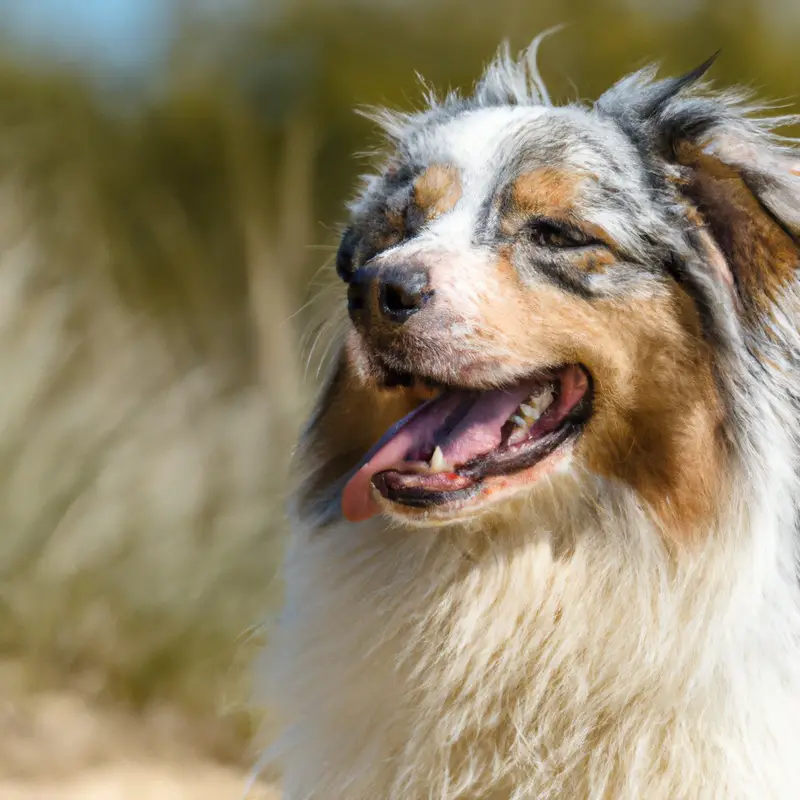
Challenges and Considerations for Competitive Agility Trials
1. Health and Safety Precautions for Australian Shepherds
When it comes to the health and safety of Australian Shepherds in agility trials, there are a few important precautions to keep in mind. Firstly, make sure your dog is in good physical condition before starting any agility training.
Regular vet check-ups and a balanced diet are crucial.
Second, always warm up your Australian Shepherd before each training session or competition. This can help prevent muscle strains or injuries.
Simple exercises like walking or light jogging can get their muscles ready for action.
Third, pay attention to the temperature and weather conditions. Australian Shepherds have a thick double coat that can make them prone to overheating.
Make sure they have access to shade and water during breaks, especially on hot days.
Fourth, proper hydration is key. Always have fresh water available for your Australian Shepherd, both during training and after.
This will help prevent dehydration and keep them hydrated.
Fifth, invest in appropriate gear and equipment. Make sure your dog has a well-fitting harness or collar, as well as sturdy and comfortable footwear to protect their paws during jumps and sharp turns.
Lastly, know your dog’s limits and don’t push them beyond what they are physically capable of.
Agility trials can be intense and demanding, so be mindful of your Australian Shepherd’s stamina and energy levels. Take breaks when needed and listen to your dog’s cues.
2. Managing Australian Shepherds’ Energy and Focus
Managing Australian Shepherds’ energy and focus is key for success in agility trials. As an expert, I recommend providing them with regular physical exercise to release their energy.
This can include activities like long walks, runs, or playing fetch.
Mental stimulation is also important, such as puzzle toys or obedience training. Additionally, maintaining a consistent training schedule and using positive reinforcement techniques will help keep their focus during agility trials.
Remember to be patient and understanding, as each dog may have different needs and abilities.
3. Finding Appropriate Competitions for Australian Shepherds
When it comes to finding appropriate competitions for Australian Shepherds, there are a few key factors to consider. Here are some tips to help you in your search:
- Research the different types of agility trials: There are various types of agility trials, including AKC, USDAA, and ASCA trials. Each organization may have different rules and regulations, so it’s important to understand which trials align with your goals and your dog’s abilities.
- Look for trials suitable for your dog’s level: Agility trials are typically divided into different classes based on the skill level of the dog. Make sure to choose competitions that offer classes suitable for your Australian Shepherd’s experience and training level.
- Consider the trial environment: Some dogs may thrive in indoor trials, while others may prefer outdoor settings. Take into account your dog’s comfort level and any specific preferences or challenges they may have when choosing competitions.
- Check the trial dates and locations: Look for trials that are conveniently located and align with your schedule. It’s important to plan ahead and ensure you can commit to the competition dates without any conflicts.
- Seek recommendations and advice: Reach out to fellow Australian Shepherd owners, trainers, or agility enthusiasts for recommendations on competitions that have a good reputation and are well organized. Their insights and experiences can be valuable in finding suitable trials.
Remember, each dog is unique, and finding the right competitions for your Australian Shepherd may require some trial and error. Start with smaller, local trials to give your dog a chance to gain experience and confidence before moving on to larger competitions.
Good luck and have fun in your agility journey with your Australian Shepherd!
4. Overcoming Potential Training Obstacles
Overcoming potential training obstacles is a common challenge when it comes to training Australian Shepherds for agility trials. However, with patience and persistence, these obstacles can be overcome.
One potential obstacle is fear or anxiety.
Australian Shepherds may be hesitant to try new obstacles or may become overwhelmed in a competition setting. To overcome this, it’s important to gradually introduce them to new equipment and environments, using positive reinforcement and rewards to build their confidence.
Another obstacle is stubbornness or independence.
Australian Shepherds are known for being intelligent and strong-willed, which can sometimes make them resistant to training. To address this, it’s important to establish a consistent and firm training routine, while also making training sessions engaging and enjoyable for the dog.
Lack of focus and distractions are also common challenges.
Australian Shepherds have a high energy level and can easily become distracted by their surroundings. To overcome this, it’s important to train in environments with controlled distractions, gradually increasing the level of distractions as the dog progresses.
Using high-value rewards and keeping training sessions short and focused can also help maintain their attention.
Lastly, consistency and repetition are key. Training obstacles require repetition to reinforce learning, and inconsistency in training can lead to confusion for the dog.
It’s important to set aside regular and dedicated training time, and to consistently reinforce good behaviors.
Final Verdict
I firmly believe that Australian Shepherds can be trained to be highly competitive in agility trials. With their natural athleticism, intelligence, and eagerness to please, they possess the perfect combination of qualities needed for success in this demanding sport.
By starting early, building essential skills, providing obstacle familiarization, and introducing handling techniques, Australian Shepherds can become formidable competitors.
However, it is crucial to consider health and safety precautions, manage their energy and focus, find appropriate competitions, and overcome training obstacles. With dedication, patience, and proper training, Australian Shepherds can excel in agility trials and showcase their incredible abilities to the world.

